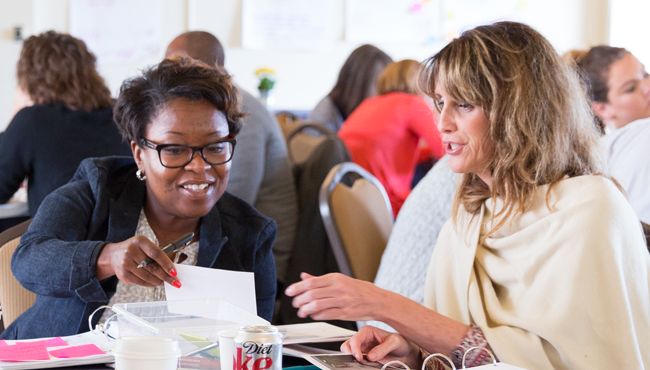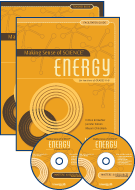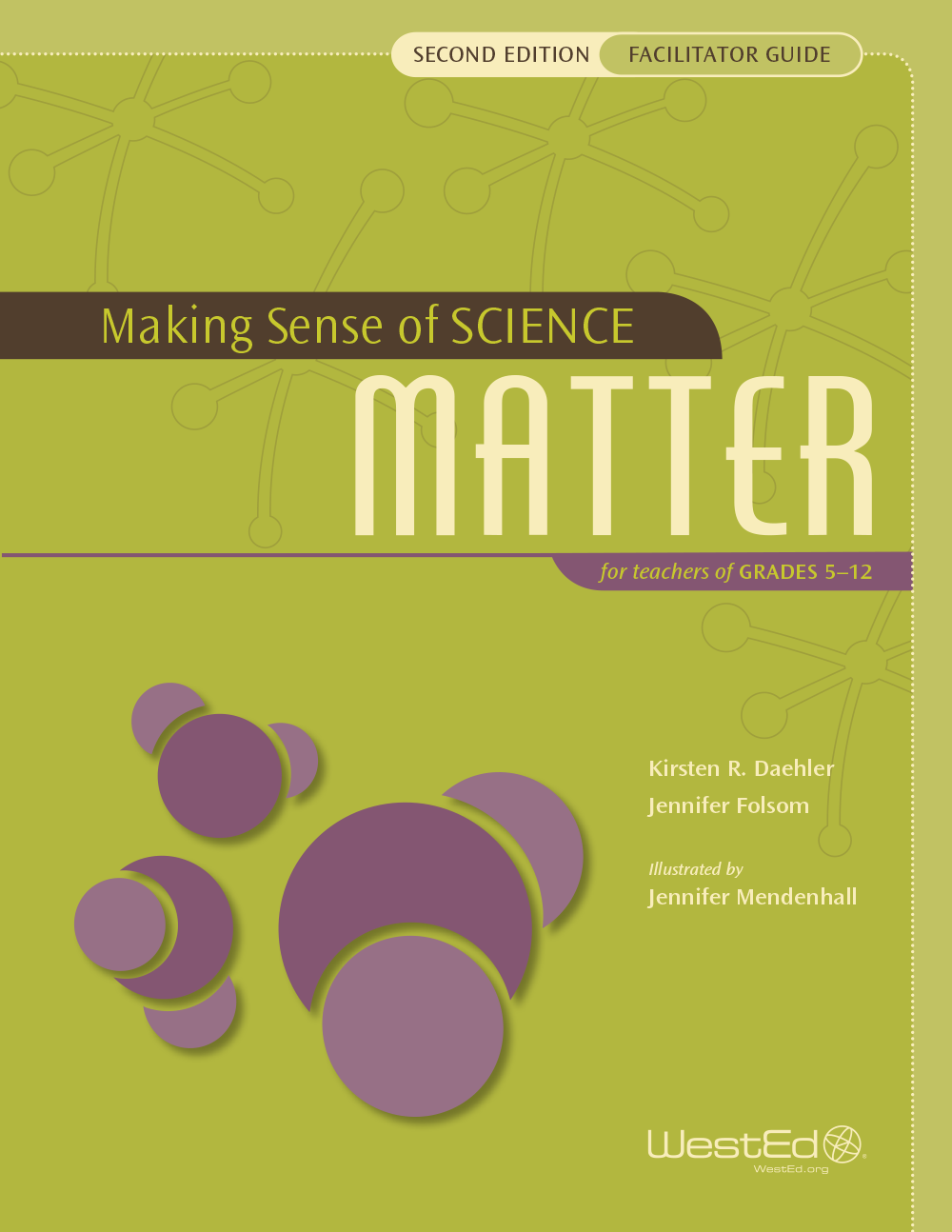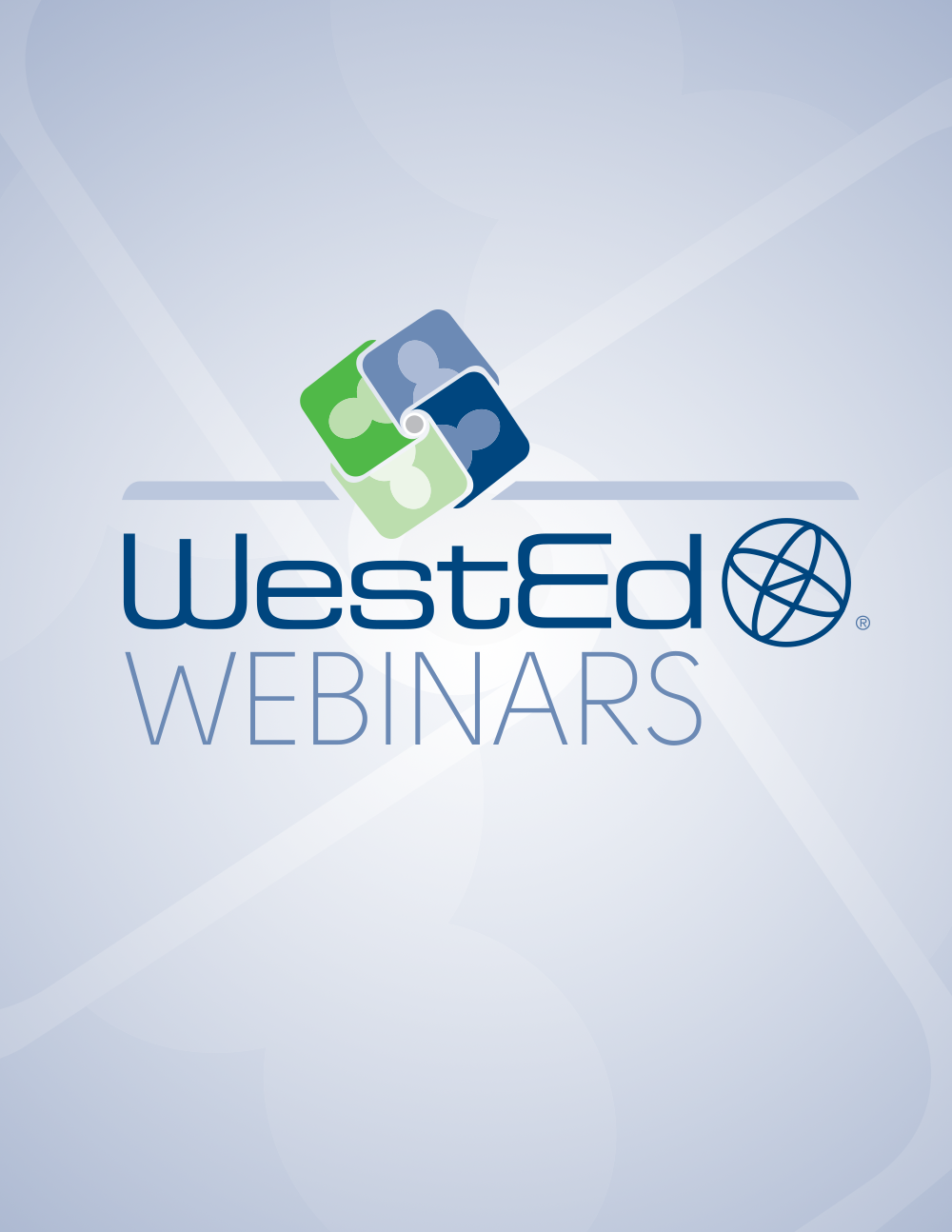Making Gains in Science: From Teacher Learning to Student Learning
Posted on

“I’ve been in education for 25 years, and I’ve never seen professional learning have this kind of impact.” Judy Meredith, K–12 science curriculum coach in Arizona’s Peoria Unified School District, is referring to the ripple effect of teacher professional learning courses that have led to higher achievement test scores for students.
“Transferrable to any content, Making Sense of SCIENCE is creating teachers able to help students learn how to think well, not just regurgitate information,” adds Meredith.
Since its inception in 1998, WestEd’s Making Sense of SCIENCE (MSS) has been expanding and refining its impact through these professional learning courses for teachers. Evaluations in multiple settings over the years have found positive impacts on multiple levels. Large-scale studies have demonstrated that MSS courses produce significant improvement in teachers’ classroom practices and science content knowledge.
The ultimate aim of any investment in teacher learning is to improve student learning. To achieve this goal, the professional learning experience must have an impact that ripples through teachers, on to classrooms, then on to students. Unsurprisingly, this complex chain is all too easily broken. It is very rare for professional learning programs to demonstrate measurable improvement at the student level.
Yet MSS has achieved that goal repeatedly — initially in elementary school science, where rigorous studies found significant improvement of student learning as measured by project- and evaluator-developed tests. More recently, a randomized controlled trial completed in 2017 found significant improvement in student achievement as measured by state standardized tests. By the end of the second year of this study, which focused on middle school science in Arizona, students of teachers who had taken MSS courses had gained the equivalent of nearly six additional months of learning, based on a nine-month school year, compared with students in control classrooms.
A successful model for professional learning
Some of MSS’s success is attributable to an underlying approach of treating teachers with respect as professionals, says Kirsten Daehler, director of MSS. “We provide courses and materials for teachers seeking to learn complex content. We support them in taking ownership of their learning, and we engage them in cognitively rich thinking — going right to the hardest learning and helping them find tools to handle it.”
For some, this approach can be unnerving at first, she says. “Especially with the Next Generation Science Standards, teachers are being asked to teach content that many haven’t previously had a chance to learn, and to teach it in ways that are often different from their own previous learning experiences.”
Joan Heller has evaluated MSS courses and interventions since the late 1990s. “I’ve seen that through experiences with MSS, teachers become more confident and enthusiastic about teaching science. This is not only because they learn so much content themselves in the courses, but also because they become comfortable with not knowing some of the content,” notes Heller, the lead researcher and director of Heller Research Associates.
“This is unlike the typical transmission model of teaching and learning — and it’s at the heart of what’s different about MSS. Teachers gain not only knowledge about science but also confidence in their ability to help students learn new content.”
MSS courses are full of hands-on learning experiences, with teachers learning content as adults but also gaining insight into their students’ thinking processes and how to help them learn. “These teachers become much more willing to let their kids grapple with finding an answer or to come up with different answers,” says Meredith, noting that after taking MSS courses, teachers often spend time in their classrooms learning alongside students, rather than acting as experts at the front of the room.
Arizona MSS study
The 2017 Arizona MSS study involved 70 middle school teachers from 62 schools in 11 Phoenix-area districts reaching 21,000 students, many of whom are English language learners or have high needs. Teachers took three MSS courses, focusing on force and motion; matter; and energy.
The courses, having been developed and refined over many years, incorporate science content and instructional strategies as well as literacy support, reinforcing Common Core expectations of building students’ reading, writing, speaking, and listening skills in science. “We provide professional learning experiences and materials for teachers — not student curricula — focused on science content related to, but more advanced than, what students are expected to learn,” says Daehler.
Measuring outcomes, evaluators found that effect sizes grew for both teachers and students in the second year of the two-year study. Teachers’ content knowledge in physical science showed significant positive effects, and, based on self-reports in surveys, their confidence in their ability to teach the three physical science domains consistently exceeded that of control teachers after two years.
“It’s incredibly rare, especially at the middle school level, to look three to four ripples out from an intervention and be able to say with certainty that you are benefiting students in the classroom.”
Student outcomes were even more compelling, says Daehler. “It’s incredibly rare, especially at the middle school level, to look three to four ripples out from an intervention and be able to say with certainty that you are benefiting students in the classroom.” The positive results could be due in part to the fact that teachers incorporated MSS principles in teaching a variety of topics, not just those topics that were part of the MSS courses, says Heller.
Inside the classroom
Despite MSS’s successes, Daehler knows there is still much to learn, particularly about how and why the work teachers do in MSS courses translates into better achievement for students. “We need to learn more about why those outcomes change,” she says, perhaps by gaining greater insight into exactly which classroom practices are contributing to improved student performance, something she says the Arizona study could not address adequately.
Ongoing research is looking further into this issue, indicating that classrooms of teachers who have taken MSS courses appear to incorporate more approaches such as helping students make sense of hands-on exploration and the use of models for learning science. Nicole Wong, Associate Director of Heller Research, is leading a series of studies that use direct observations and video documentation to analyze what happens in classrooms. According to Wong, preliminary results from a national randomized controlled trial indicate that, compared to control classrooms, classrooms of 4th grade teachers who participated in an MSS course on electric circuits have:
- higher levels of student cognitive engagement in science,
- stronger focus on conceptual understanding of core science ideas,
- stronger use of representations to support science learning,
- higher levels of student engagement in scientific sense-making practices, and
- stronger teacher elicitation of and attention to student ideas.
Lessons from Peoria Unified
In Arizona’s Peoria Unified, work focused on what has helped make MSS successful continues, says Daehler. “The school board seeks evidence-based approaches and continues to gather data. The district is also committed to supporting teachers over time, for example, by maintaining leaders in the curriculum instruction office, even in periods of economic downturn, expanding the influence of the initial professional learning.”
Meredith points to other factors that have helped enhance the effectiveness of the MSS professional learning. “First, it’s important for facilitators to go through the facilitation academy prior to rolling out the courses with teachers or the district,” she says. “What people learn there is golden.”
Well after teachers have finished the MSS courses, Meredith continues to see examples of MSS skills being successfully transferred to students. She recently observed a teacher who was using MSS approaches in her human physiology course but not in her biology course. In human physiology, the teacher had students demonstrate what they thought was going on with a particular science problem, then did a little teaching and an activity and had students change the model based on what they’d learned.
One day, a few students who were taking both courses stood up in the biology course and said, “We’ve decided to revolt.” The teacher asked, “What are you talking about?” They told her, “In human physiology, we get to write down what our thinking is — we draw it, we graph it, we make a graphic organizer, we do something to show what our thinking is. And then we change it as we learn more. You have no idea how helpful that is. We need to do it in this class, too!”
The students explained what they liked most about the process, which was collaborating with other students — not working alone — and demonstrating their thinking process so they could catch each other’s mistakes, says Meredith.
After hearing students’ feedback, the teacher decided to incorporate what she’d learned from MSS into both of her science courses. What rippled from teacher to classroom to students appears to be continuing to make waves.
[Note: The Making Sense of SCIENCE study in Arizona was funded by a grant from the Institute of Education Sciences (IES), U.S. Department of Education. The contents of this article do not necessarily reflect the views or policies of the funder.]



